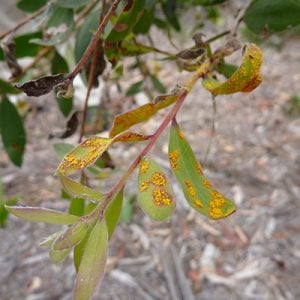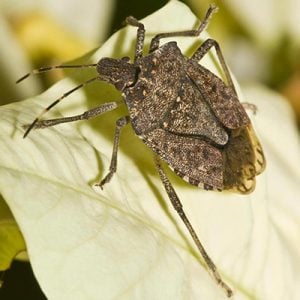The Botanic Gardens Biosecurity Network is calling on visitors, friends, volunteers and staff of botanic gardens to take part in three targeted biosecurity pest blitzes between September and November this year.
What is a biosecurity pest blitz?
Biosecurity pest blitzes are a way to conduct surveillance for plant pests and diseases. Blitzes are run over a set period of time. They encourage and support communities to participate in surveillance for pests and diseases.
Each year the WA government hold the Biosecurity Blitz, an annual event which runs during October and November each year. This year the Biosecurity Blitz will run from the 19 October -16 November and is an opportunity to join in and help discover as many interesting or damaging pests (animals, insects, diseases, weeds and aquatic pests) as possible across Western Australia over the course of a month. If you are located in Western Australia please check the Biosecurity Blitz website, sign up and participate.
Botanic gardens biosecurity pest blitzes
This year the Botanic Gardens Biosecurity Network will be hosting biosecurity blitzes for myrtle rust, brown marmorated stink bug and tree of heaven. Reports for each blitz will be taken using the MyPestGuide™ Reporter app.
During each blitz we will be asking you to get out and about if you can, and look for these pests in your own home garden, your local botanic gardens, or as you take a walk. If you are restricted in where you can go due to COVID-19, look in your home garden.
In the lead up to each blitz we will be providing detailed information on how to identify each target and instructions on how to make a report using the MyPestGuide™ Reporter app.
For the latest updates on each blitz follow the Botanic Gardens Biosecurity Network on Facebook.
Remember that if you think you see one of the exotic pest targets outside of each Blitz week, still send a report in.
Myrtle rust blitz
12-20 September 2020

Angus Carnegie, NSW DPI
Myrtle rust is a disease caused by the fungus Austropuccinia psidii which affects more than 350 species in the Myrtaceae family. It was first identified in Australia in 2010 and is now widespread along Australia’s eastern coast.
During the blitz look for myrtle rust on up to five different plants belonging to the Myrtaceae family in your backyard or local botanic gardens. Make a report to the ‘botanic gardens’ project in the MyPestGuide™ Reporter app for each plant on which you look for myrtle rust. For each plant take up to 4 photos, report the species of plant (if known) and whether myrtle rust was present or absent.
More information about the myrtle rust blitz is available in this article and the myrtle rust blitz flyer.
Stink bug blitz
3-11 October 2020

Susan Ellis, Bugwood.org
Brown marmorated stink bug (Halyomorpha halys, BMSB) is a mottled brown coloured, shield shaped stink bug. It is a voracious feeder, affecting about 300 known plants including nuts, fruit, vegetables and ornamentals.
During the blitz look for BMSB in your backyard or local botanic gardens. If you see what you suspect to be a BMSB catch it in a secure container, take up to 4 photos of the bug and send a report to the ‘botanic gardens’ project in the MyPestGuide™ Reporter app.
For more information download the stink bug blitz flyer.
Tree of heaven blitz
14-22 November 2020

Chuck Bargeron, Bugwood.org
Tree of heaven (Ailanthus altissima) is an introduced species which has been is a host of the exotic pests spotted lanternfly and brown marmorated stink bug.
During the blitz look for tree of heaven (Ailanthus altissima) in your backyard, local roadsides, reserves or botanic gardens. Send reports of suspected tree of heaven plants to the ‘botanic gardens’ project in MyPestGuide™ Reporter app. Identifying where these trees are will help us work out if we can use them as ‘sentinels’ to look for exotic pests.
For more information download the tree of heaven blitz flyer.


2 comments, add yours.
Heather West
Is the Tree of Heaven blitz in NSW? We have a big infestation in our old cemetery.
alexlucchetti
Hi Heather, The tree of heaven blitz is a national event and we welcome reports from anywhere in Australia. For more information about participating in the tree of heaven blitz check out this article: https://extensionaus.com.au/botanicgardensbiosecurity/tree-of-heaven-blitz/